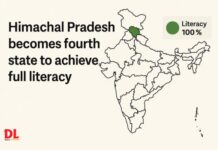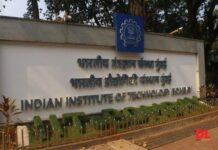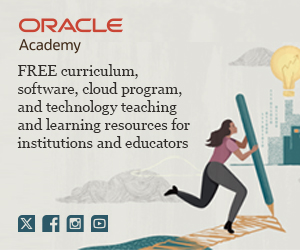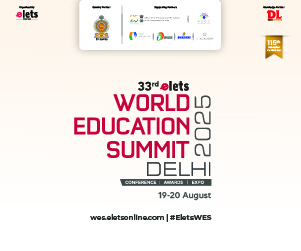20 to 25 percent of American K-12 teachers use social media as a way to become part of a professional community, according to a survey by the U.S. Department of Education. Twitter in particular seems to have caught on with many teachers. Important assets are Twitter's 140-character limit and “hashtag” function, which allows a user to attach to a message a unique identifier code for anyone interested in a particular topic. Twitter also allows teachers to check in when they only have 45 minutes before their next class, for example. When Kevin Jarrett, a computer teacher at Northfield Community School in Atlantic County, N.J., wanted to teach his kindergarten pupils about farms, he sent out a request on Twitter and soon connected with two farmers who answered his students' questions by video. Such educators are among a growing number in the Philadelphia region who are using Twitter, the social-networking and micro-blogging service, to enhance their teaching, often on their own time. Some educators use Twitter – through which users “tweet” messages limited to 140 characters – to connect their students with the outside world. Others use it to share resources and ideas with other teachers. For teachers who spend much of their days as the only adult inside classrooms, Twitter – along with other social-networking websites – can provide a unique platform for conversation. Teachers have traditionally networked through conferences. A drawback from those meetings, said Bill Brannick, principal at Monsignor Bonner and Archbishop Prendergast Catholic High Schools in Drexel Hill, is that once they are over, the connections often disappear. Many educators who use Twitter say it takes a little while to figure out how to make the service work for one's needs. The process involves figuring who somebody might want to follow and how to most effectively send out requests or updates, for example.
CLSA Capital put Rs 100Cr in Resonance coaching
Private equity interest in India's bustling education sector only continues to grow. And this time, Kota-based Resonance Eduventures Pvt Ltd, a test preparation company offering coaching for IIT-JEE and other engineering entrance exams, is raising Rs 100 crore ($22 million) from CLSA Capital Partners, two persons with direct knowledge of the development told VCCircle. CLSA Capital Partners, an Asian independent brokerage and investment group with $2.7 billion in funds under management, is said to be leading the negotiations. The asset management firm is investing Rs 100 crore for up to 12 per cent stake in the company, thereby valuing the firm at a little over Rs 850 crore. The deal which attracted the interest of about 10-12 players, fetched a significant premium to its publicly listed peer, Career Point Infosystems Ltd. Career Point, which has a market capitalisation of Rs 603 crore, is trading 15.4x its trailing PBT for FY11. According to VCCedge, the financial research platform of VCCircle, Resonance Eduventures had PBT of Rs 20 crore for the year ended March, 2010. This means Resonance is being valued over 40x its one-year-old PBT. Its latest financial numbers are not available yet. Resonance apparently commanded a higher valuation multiple in spite of having comparatively lower net profit margin (comparing Resonance's FY10 with Career Point's FY11 numbers).
TeamLease-IIJT offer employment opportunities to youth in Kolkata
Team Lease Services, the staffing solutions company and Indian Institute of Job Training (IIJT), growing vocational skills training company organised a job fair for youth in Kolkata. The event connected job aspirants with employers, assessment counselors, and training professionals.
About 100 candidates participated in the fair. Candidates were taken through assessment and employability evaluation conducted by TeamLease and IIJT counselors. Based on assessment tests results, IIJT counselors suggested requirements of necessary vocational skills training to the candidates. Top companies like Vishnu Solutions Pvt Ltd, Domino's Pizza India Ltd, Nevaeh Technology Pvt. Ltd and NCS Computech participated in the job fair. Major openings were seen in sectors like Info Tech, Retail and Sales.
According to Savita Singh, National Head Placements at IIJT Education, “It is an effort from IIJT Education Pvt Ltd (A TeamLease Group Company) to bring the employment and employability solutions under one umbrella. As talented manpower is getting scarce, this event will provide a platform to attain the talented resources that they are looking for. This event promises to cater skilled manpower for domains like – Info Tech, Retail and Sales.”
Delegation from University of Dayton visits DTU
A Delegation from the University of Dayton, Ohio lead by Dr. Joseph Saliba, Provost visited Delhi Technological University to explore the possibilities of collaboration between University of Dayton, UD and Delhi Technological University, DTU. The delegation met the Vice Chancellor, Heads of the Departments and Deans of the University and also visited the DTU Centre for Bio-fuels Research and research Centre in Optical Communication. During the interaction with the faculty common areas of collaboration have been identified as New Materials and Composites, Electro Optics, Sensor integration and Remote Sensing, Image Processing and Data Compression and Clean Energy Technologies.
UD is focussed around industry relevant and sponsored research in these areas and has its technology incubators devoted to new technology and innovative product development. DTU also has a sizeable research activity in the above areas. It was decided to develop collaborative linkages for joint Ph.D programs, student exchange for international experience and also knowledge partnership in selected areas for collaborative education. UD has its Spring Program under which foreign students spending their semester at University of Dayton are allowed to register for four courses in one of more departments which are offered at a significantly discounted fee and including room and boarding. This facility could be utilised for student exchange in the UG and PG programs of DTU through collaborative linkages. Likewise, UD shall also explore the possibilities for sending its students for international exposure at DTU.
Dr. Joseph Saliba, Provost, UD says “For both of our institutions to remain State of Art and Competitive we must develop an International Collaboration and create synergy between our two institutions. We are truly proud to be working with top ranked institutions such as DTU and we are truly cognisance of the importance of faculty and student exchanges for the University of Dayton to remain a top research International University”.
“In the new knowledge age there is no escape for the Universities in India or for that reason any part of the world other than to collaborate to meet the challenges of the knowledge revolution. DTU is committed to create avenues for global partnership in education as well as research in areas of common interest to India and US” says Prof. P.B. Sharma, Vice Chancellor, Delhi Technological University. Both Dr. Joseph Saliba, Provost, UD and Prof. P.B. Sharma, Vice Chancellor, DTU thanked the Distinguished Alumnus of Delhi College of Engineering Shri Raj Soin, Chairman Soin International for facilitating this dialogue between the two Universities.
The Delegation was accompanied by Sundar Kumarasamy, Vice President for Enrollment Management and Rajalakshmi Ananthraja, Manager India Initiatives, Enrollment Management. Dr. S. Maji, Dean (IRD), Dr. R.K. Sinha, Head (Applied Physics), Dr. B.D. Pathak, Dean (Academics) and Dr. H.C. Taneja, Dean (Student Welfare) also attended the interaction.
Haryana government and IGNOU establishes community college
Shri Bhupinder Singh Hooda, Chief Minister, Haryana, inaugurated the Indira Gandhi National Open University's (IGNOU's) Haryana IGNOU Community College, Institute for Competency Advancement of Teachers (iCAT) and a new teaching block at Government Polytechnic, Manesar.
“Keeping on the tab of the number of polytechnics in Haryana, the state has seen immense growth in their number. The efficiency of both teachers and students are imperative for the state's growth. We must ensure this type of mutual benefit arising from education so that the students get employment,” said the chief minister while inaugurating the community college. He also urged to start paramedical vocational programmes in the community college.
“We started this scheme of community colleges under public initiative to chalk out a programme for skill development in the country. It is an autonomous society created by the university to provide vocational education, skill upgradation and training which will help the country to answer the problem of skill deficit,” said Prof. V. N. Rajasekharan Pillai, VC, IGNOU during the inauguration.
Under this collaboration between IGNOU and Haryana Community college, twenty new courses will soon be introduced on security, automobiles repair, fabrication, electrical, electronics, information and communication technology, printing, garments, fire safety management, water harvesting management, tourism and hotel management, foreign language (Spanish and French), paralegal, beautician, creative writing and communication skills, construction design, transport management and conductor training, retailing management.
However, to launch with, initially five courses have been introduced, namely, Diploma in BPO, Finance & Accounting, Fire Safety, Security Management, Front Office Management and Housekeeping. These are tailor made courses that are already certified by IGNOU. Dozens of skills are being identified by collecting information regarding their employability in the area and are likely to be launched shortly.
The basic aim of introducing the community colleges in a state is to increase the professional capacity of higher secondary school teachers, college teachers, ITI, polytechnic, engineering college, community college and vocational college teachers.
Community college concept is an alternative approach to provide system education and skilled development which aims to gainful employment. They generally have modules ranging in duration from three months to two years leading to an associate degree. It is tailored as per needs of local community and industry that contributes to economic growth because they provide an educated skilled workforce.
The function was organised under the joint venture of government of Haryana and IGNOU in the presence of Shri Mahender Partap Singh, Revenue and Technical Education Minister, Haryana, Rao Inderjeet Singh, MP, Gurgaon, Sukhbir Kataria, Minister of State for sports and youth affairs, agriculture and cooperation, Rao Dharam Pal, MLA, Badshahpur and Dharambir Singh, MLA, Sohna, P.C. Meena, IAS, Deputy Commissioner, Gurgaon, Dr. Avtar Singh, IAS, DG Technical Education, Haryana, Ajit M Sharan, IAS, Financial Commissioner and Principal Secretary to Government of Haryana, Technical Education Department.
AIESEC Delhi IIT to organise
AIESEC Delhi IIT, part of AIESEC, is organising the “Youth To Business 2011” (Y2B 2011) forum in Delhi, an initiative towards social entrepreneurship on the 20th June 2011. To be held at the Indian Institute of Technology (IIT) Delhi, the event aims to bring together a mix of 300 graduates and under graduate students along with Equity, Marketing & HR heads of around 50 companies.
Following the core AIESEC ideals of promoting the spirit of leadership and entrepreneurship, the “Youth to Business Forum 2011”, seeks to provide the youth with an opportunity to realise this very dream of executing a successful venture.
The highlight of the Y2B 2011 will be the AIESEC -IIT Delhi & United Nations Millennium Development Goals (MDGs) powered Social Innovation Competition (SIC), for the young population to discuss their thoughts and opinions through revolutionary business plans, based on the United Nations Millennium Goals.
Participating students OF SIC will be presenting a revolutionary business plan in their endeavour to make this world a more pleasant place to live in. The best of the Social Business Plan will then be opened to a variety of venture capitalists and corporates to arrange for financial sustainability. To name a few, venture capitalists like Indian Angel Network and LTG will be present at the event amongst others.
Eminent panelists at Y2B 2011 include Rajiv Chandran – National Information Officer, Sanaullah Fathi, Rita Soni – CEO, NASSCOM Foundation, Dilip Chenoy – MD, National Skill Development Corporation, Kamini Kinger – Director, National Social Entrepreneurship Forum. The United Nations Millennium Development Goals, encourages the youth to merge with the business world. These issues, adopted as a part of the global action plan to achieve the eight anti-poverty goals by 2015, include issues like women's and children's health and other initiatives against poverty, hunger and disease.
The highlight of the Y2B 2011 will be the AIESEC -IIT Delhi and United Nations Millennium Development Goals (MDGs) powered Social Innovation Competition (SIC), for the young population to discuss their thoughts and opinions through revolutionary business plans, based on the United Nations Millennium Goals. Participating students OF SIC will be presenting a revolutionary business plan in their endeavour to make this world a more pleasant place to live in. The best of the Social Business Plan will then be opened to a variety of venture capitalists and corporate to arrange for financial sustainability. To name a few, venture capitalists like Indian Angel Network and LTG will be present at the event amongst others.
The United Nations Millennium Development Goals, encourages the youth to merge with the business world. These issues, adopted as a part of the global action plan to achieve the eight anti-poverty goals by 2015, include issues like women's and children's health and other initiatives against poverty, hunger and disease.
BU offers
First time in the state, Bangalore University has decided to introduce a medical insurance policy for its post-graduate students from this academic year. Students need not to invest in extra money to avail of the insurance benefit, as the university will be paying the entire premium amount. National Insurance Company (NIC) will be partnering with Bangalore University in providing medical insurance to students, offering health and accident coverage to postgraduate students. The entire premium amount will be borne by the university and students need not feel its burden at all. “An annual premium of `582 will be paid by the university for every student and in all about `20 lakh will be spent under this head in a year, as stated by Dr N Prabhu Dev, vice-chancellor, BU. The proposal to introduce medical policy for the PG students was placed before an academic council meeting of the university on Wednesday. The council unanimously agreed to the proposal. This scheme will go by the name 'Vidyarthi Medical Policy for Students'. Under the policy, the postgraduate students of the university are eligible to get medical benefit up to Rs50, 000. About 3,500 students will be covered by the policy. In case of a student's death, the university will give Rs50, 000 to his/her family. The scheme will also provide education expense in case a student loses his or her family's breadwinner. In such a case, the student will be provided Rs1 lakh to continue his/her studies.
Infosys BPO Collaborates with IIM Bangalore
Infosys BPO announced that it has jointly developed a highly customized case study with the Indian Institute of Management Bangalore (IIMB). Developed jointly by Infosys and Professors Janat Shah and L S Murty of IIMB, and slated to be used by business schools as part of the management curriculum, the key objective of this case study is to impart industry specific knowledge to management students whilst integrating practical experience and expertise with theoretical concepts. Starting this year, the case study will be included in the IIMB Operations Strategy Course for second year management students.
The case study, being the first on the BPO industry to be published and taught in Indian, and perhaps, global business schools, is presently being piloted in an IIMB executive development program. This will also become part of a larger case study bank that is shared among leading business schools across the world including blue chip B-Schools in the US and Europe.
“We are delighted to be an integral part of this unique initiative in collaboration with IIMB, a highly prestigious business school. This is a first-of-its-kind program, wherein a case study has been developed based on the BPO industry and has been adopted as part of the curriculum. This initiative showcases the evolution of the BPO industry from being perceived as a mere transactional back-office and support function to an essential transformational business function that adds tremendous value to any business”, said M Swaminathan D, CEO and MD, Infosys BPO.
“This partnership also demonstrates Infosys BPO's commitment to sharing its best practices and educating the managers of tomorrow, ensuring that adequate knowledge and skill sets are developed, which will enable them to take on responsibilities in a myriad of service sectors within the BPO industry”, he added.
According to Professor Dinesh Kumar, Chairperson, Research & Publications, IIMB, “There is an increasing need to develop courses in higher education based on industry requirements. The Infosys BPO case study is likely to become essential reading material for students interested in learning about BPO operations and will ensure that they gain practical knowledge and are better equipped to take on the challenges of the corporate world. Establishing an industry-academia collaboration to train the future generation of workforce is extremely critical. We strongly believe that the Infosys BPO – IIMB partnership is an important step in this direction”.
Tradus.in brings Blackberry Playbook to India
Tradus.in has launched BlackBerry Playbook in India. The product is yet to enter the brick and mortar stores in Indian market but it can be virtually explored and booked at Tradus.in.
The sensational Playbook is available in three versions of 16 GB, 32 GB and 64 GB memory space. The ultra-portable design & power-packed features of the BlackBerry PlayBook helps you transform your work at office, and is a true companion to play with at home.
“Lately, Gadgets have been ruling the consumer space and we are glad to bridge the gap between our customers & their gizmo needs, by offering this sensation from Blackberry. With over 10 tablets already pre-booked on Tradus.in, we are very confident that the demand of this tablet will only continue to rise,” says Rahul Sethi, President, e-commerce, Tradus.in.
Playbook is available for pre-booking on Tradus.in and will start shipping to the buyers from 24thJune. Blackberry Playbook is price at Rs. 27,990 for 16GB Rs. 32,990 for 32 GB and 37,990 for 64 GB.
Biometric Attendance for Haryana School Teachers Soon
In a bid to keep a tab on teachers and to prevent their increasing absenteeism from government schools, Haryana government has decided to install biometric fingerprint scanners in around 2622 government schools in the state.
“Many cases of teachers' absenteeism have come to light in Haryana government schools during the past few months. The situation is worse in the schools that are located in rural areas. There are cases where teachers come to school only once in a month to mark their presence in the register,” a senior official of Haryana Education Department said.
“This project will be completed by August. The biometric scanners are being installed under the centrally sponsored scheme for information and communication technology in schools,” he added.
Biometric fingerprint scanners would store the information about teachers like their time of arrival in the school and leaving the school. This scanner will read the fingerprints of the particular teacher and nobody could replicate them.
“These biometric fingerprint scanners are being successfully used in various institutions in the US and in European countries. Our Information Technology Department will maintain them and keep the records of every six months of all teachers,” the spokesperson stated.



















